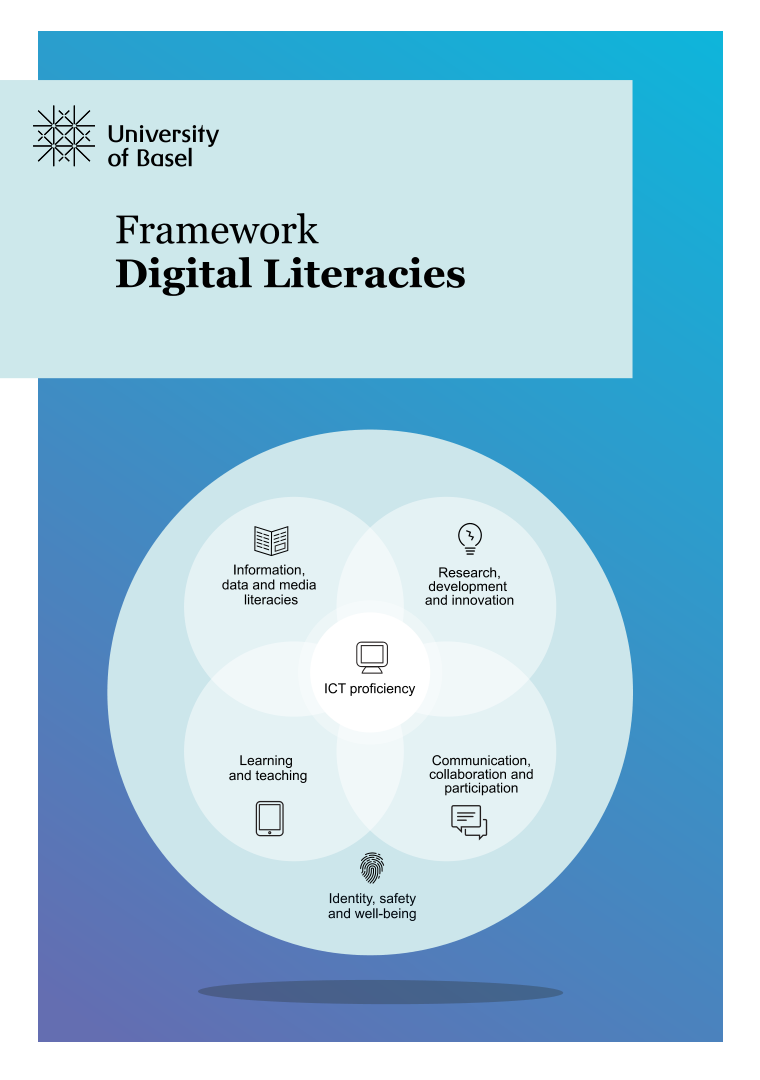Literacy area 5
Learning and teaching
Digital technology offers new possibilities for learning and teaching. The communication between students and teaching staff, as well as the communication between students, becomes easier: this enables new forms of learning (e. g. peer learning), new forms of tutoring and coaching, and new forms of evaluation.
Teachers can search for, re-use, and share teaching materials, in the spirit of open education. They can re-design their teaching to take advantage of the opportunities offered by digital technology.
Using digital technology for learning requires an understanding of the opportunities and challenges involved in learning online – and of one’s own needs and preferences as a digital learner (e. g. access, media, platform and pedagogy).
Using digital technology for teaching requires an understanding of different educational approaches and their application in digital settings as well as knowing how to use suitable tools for teaching, learning and assessment.
Concretely, literacy in digital learning means the capacity to:
- participate in and benefit from digital learning opportunities to achieve learning objectives;
- identify and use digital learning resources;
- participate in learning dialogues via digital media;
- use learning apps and services (personal or organisational);
- use digital tools to organise, plan and reflect on learning;
- record learning events/data and use them for self-analysis, reflection and showcasing of achievement;
- monitor own progress;
- participate in digital assessment and receive digital feedback;
- manage own time and tasks, attention and motivation to learn in digital settings.
Literacy in digital teaching means the capacity to:
- use digital tools to teach and evaluate students, both individually and in teaching groups;
- find, use and share good digital teaching materials;
- use digital tools to organize, structure and reflect on one’s own teaching;
- support and develop learners in digitally-rich settings, especially through
– regular feedback,
– support for peer learning,
– and the creation of learning opportunities.
Legal notice
The above description is adapted from the «Digital Capabilities Framework» of the British organisation JISC. The adaptation has been realized by the Educational Technologies of the University of Basel within the context of the project Digital Literacies.
The text on this page is licensed under the Creative Commons License «Attribution-Non-Commercial-ShareAlike» (CC BY-NC-SA). You can find more information on the web site of the Creative Commons Foundation.

